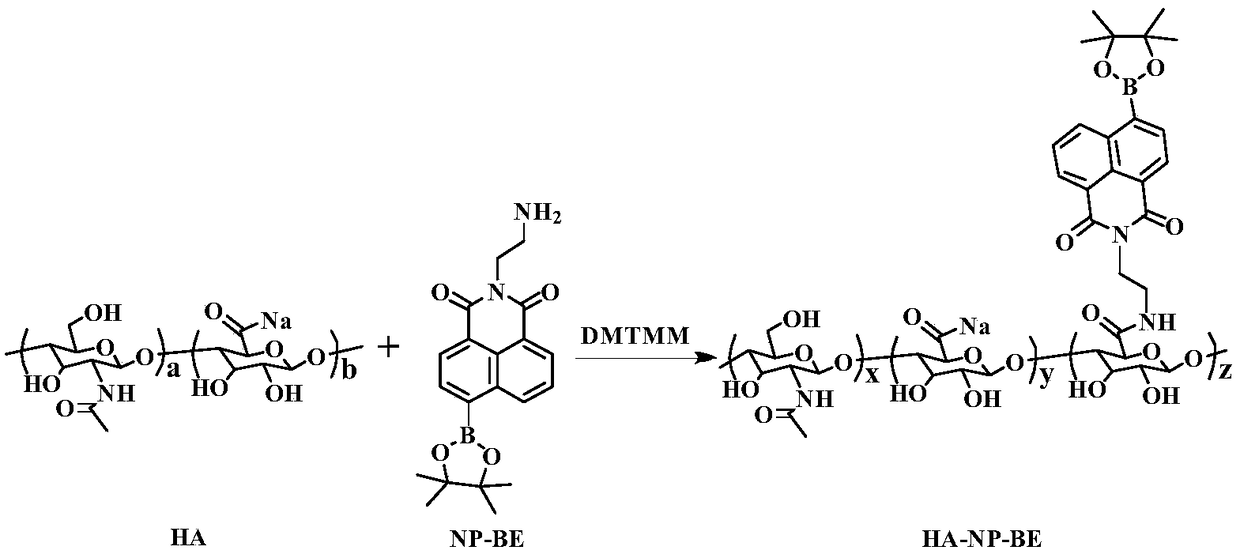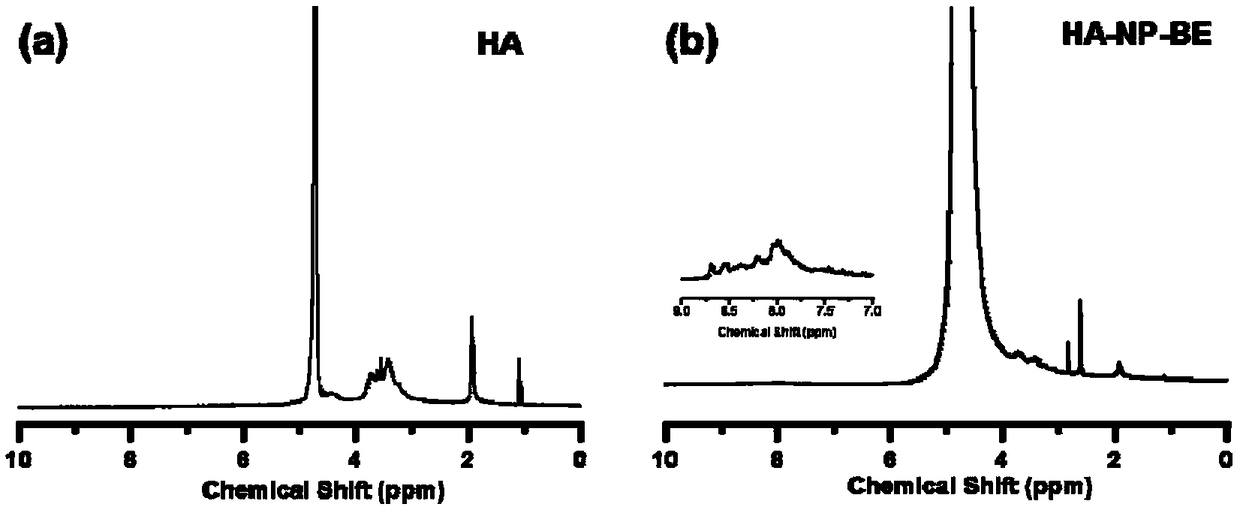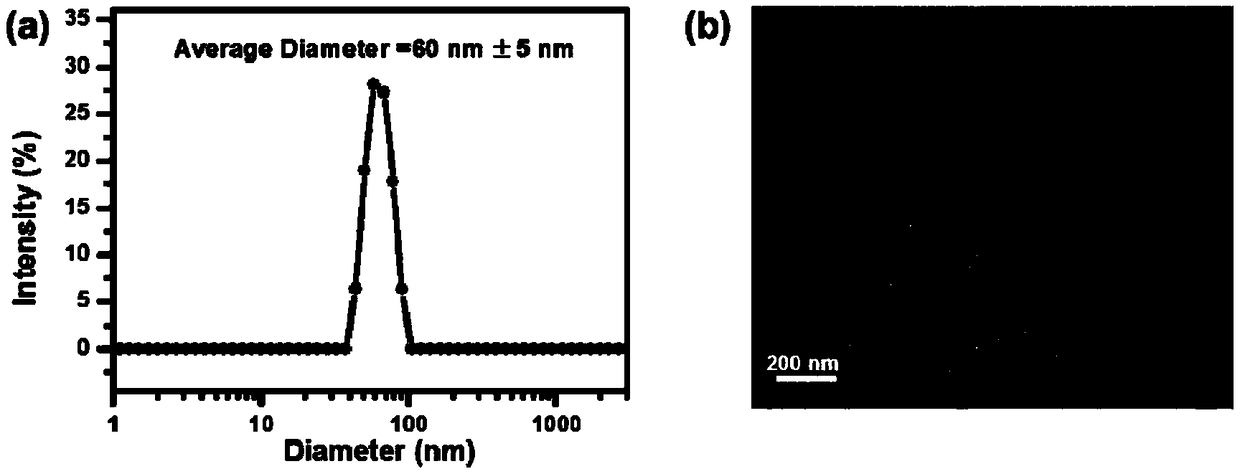Nano-fluorescent probe targeting pancreatic cancer circulating tumor cells
A nano-fluorescent probe and tumor cell technology, applied in the field of "ratio-type" nano-fluorescent probes of intracellular hydrogen peroxide, can solve the problems of reduced expression and disappointing results
- Summary
- Abstract
- Description
- Claims
- Application Information
AI Technical Summary
Problems solved by technology
Method used
Image
Examples
Embodiment 1
[0034] Example 1. Synthesis of CD44-targeted nano-fluorescent probes and tumor-targeted detection
[0035] figure 1 For the synthesis of hyaluronic acid-naphthalene imine-borate graft polymer, 160mg (0.4mmol) sodium hyaluronate was dissolved in 50mL ultrapure water, and vigorously stirred for 2h to fully dissolve. Subsequently, 117.8 mg (0.4 mmol) DTMMM was added to activate the carboxyl groups on the hyaluronic acid for 30 min. Finally, 43.9 mg (0.12 mmol) NP-BE dissolved in DMSO was added dropwise to the above mixture, and reacted at room temperature for 24 h in the dark. After the reaction, the above reaction mixture was dissolved in DMSO / H with a molecular weight cut-off of 14kDa in a dialysis bag. 2 O (1:4v / v) mixed solvents were dialyzed for two days, and dialyzed in pure water for two days. The aqueous solution purified by dialysis was freeze-dried to obtain the HA-NP-BE grafted polymer. HA-NP-BE grafted polymers are amphiphilic and can self-assemble in aqueous solu...
Embodiment 2
[0045] Example 2. Identification of circulating tumor cells in patients with pancreatic cancer
[0046] HA-NP-BE nanofluorescent probe can target endogenous H in pancreatic cancer cells 2 o 2 , and has fast responsiveness, can effectively distinguish pancreatic cancer tumor cells from normal cells, and apply it to the detection of circulating tumor cells in pancreatic cancer patients in auxiliary clinical practice. The Ethics Committee of Shanghai Jiaotong University approved the experiment. The peripheral blood of clinical pancreatic cancer patients was collected, and circulating tumor cells were enriched by negative selection. Firstly, the erythrocytes were removed by red blood cell lysate, most of the leukocytes in the blood were removed by CD45 antibody-labeled magnetic beads, and then the enriched CTCs were detected with HA-NP-BE nano-fluorescence probe and CK19-Alexa Fluor 647 respectively. stained, and finally observed and counted under a confocal laser microscope. ...
PUM
| Property | Measurement | Unit |
|---|---|---|
| particle size | aaaaa | aaaaa |
Abstract
Description
Claims
Application Information
 Login to View More
Login to View More - R&D
- Intellectual Property
- Life Sciences
- Materials
- Tech Scout
- Unparalleled Data Quality
- Higher Quality Content
- 60% Fewer Hallucinations
Browse by: Latest US Patents, China's latest patents, Technical Efficacy Thesaurus, Application Domain, Technology Topic, Popular Technical Reports.
© 2025 PatSnap. All rights reserved.Legal|Privacy policy|Modern Slavery Act Transparency Statement|Sitemap|About US| Contact US: help@patsnap.com



